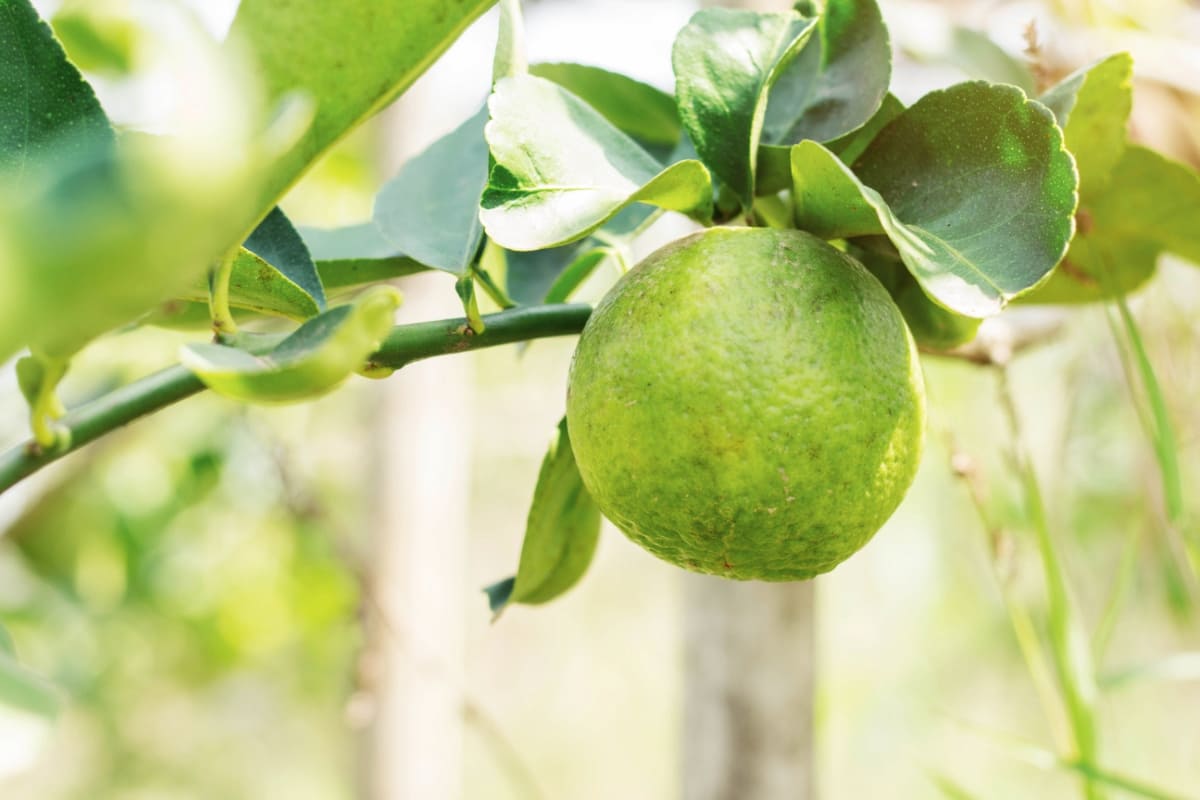Dying sweet lemon trees are a common problem for gardeners, as they can weaken or even kill the tree. The causes of a sweet lemon tree dying can range from nutrient deficiencies and diseases to environmental factors such as poor drainage or extreme temperatures. Here are the common causes of a dying sweet lemon tree and how they can be fixed:

9 Causes of Dying Sweet Lemon Trees
Why is My Sweet Lemon Tree Dying in Summer Heat, and How Can I Save It?
The summer heat can devastate many plants, including the sweet lemon tree. As the temperatures rise, the soil around the tree begins to dry out, and it can struggle to absorb the vital nutrients it needs to stay healthy. Without enough water and nutrients, the tree will gradually become weaker and more vulnerable to disease, pests, and death.
First, the soil around the tree should be kept moist. If the soil begins to dry out, it is important to water the tree regularly, taking care to water deeply to ensure the roots can access the water. Fertilize the tree during the summer, as this will replenish the nutrients lost due to the hot weather. Placing a shade cloth or other material over the tree can help reduce the direct sunlight, while mulching can help the soil retain moisture.
Preventing Sweet Lemon Tree Death from Fungal Infections: Effective Remedies and Prevention Tips
Fungal infections can be especially devastating to sweet lemon trees, as they can cause wilting, discoloration, and even death in some cases. Fungal infections are caused by fungi that feed on the plant and can spread quickly if not treated. The most common fungal infections on sweet lemon trees are powdery mildew, leaf spot, and anthracnose.
To prevent fungal infections on sweet lemon trees, keeping the area around the tree’s base free of debris and maintaining proper air circulation is important. Prune dead or damaged branches and remove yellow leaves. If possible, keep the tree out of direct sunlight for long periods. Additionally, avoid over-watering the tree; too much moisture can develop fungal infections. If fungal infections do occur, it is important to treat them quickly. Fungicides can be used to treat the infection.
Identifying Nutrient Deficiencies in Sweet Lemon Trees and Remedies to Revive Them
Nutrient deficiencies can cause various issues for sweet lemon trees, ranging from stunted growth to yellowing leaves and even death. Understanding the causes of nutrient deficiencies and how to prevent them is essential for ensuring the health and productivity of sweet lemon trees. Nutrient deficiencies can be caused by several factors, including inadequate soil fertility, soil pH that is too high or too low, or simply insufficient nutrients in the soil.
To prevent nutrient deficiencies, maintain the proper soil conditions for sweet lemon trees. The soil must drain well and be fertile, with a pH between 6.0 and 7.0. Fertilizers can also be used to replenish the soil with essential nutrients. A balanced fertilizer should be applied two to three times per year, and a nitrogen-rich fertilizer should be applied six to eight weeks.
How to Protect Sweet Lemon Trees from Pests and Diseases to Prevent Decline and Death
Protecting sweet lemon trees from pests and diseases is important to keeping a healthy and productive tree. Below are the steps to help protect your sweet lemon tree:
- Keep the area around your sweet lemon tree clean and free of debris. This reduces the chances of pests and diseases in the soil or the tree itself.
- Use a pesticide or fungicide to control pests and diseases, if necessary. Use a product specifically designed for sweet lemon trees and follow the instructions carefully.
- Consider using a pest or disease-resistant variety of sweet lemon trees. This reduces the chances of problems occurring in the first place.
- Fertilize and water your sweet lemon tree regularly to give it the nutrients to stay healthy and fight off pests and diseases.
Overwatering Issues in Sweet Lemon Trees: Signs, Symptoms, and Steps to Rescue a Dying Tree
When a sweet lemon tree is overwatered, it can cause several problems. The most immediate is that the soil can become waterlogged, depriving the tree’s roots of air. This will lead the roots to suffocate and die, which in turn will kill the tree. Additionally, too much water can create an environment in which fungal and bacterial diseases can thrive, leading to further damage to the tree.
In case you missed it: 9 Causes of Dying Custard Apple Tree and How to Fix It?

To ensure your sweet lemon tree is not overwatered, first, make sure to check the soil before you water. If the soil is moist to touch, then it is likely that the tree has enough water, and you should wait until the top inch of the soil is dried before watering again. Water the tree at the root level rather than from the top. This will help ensure the water can reach the roots and then the rest of the tree.
Underwatering Issues in Sweet Lemon Trees: Signs, Symptoms, and Steps to Rescue a Dying Tree
Underwatering your sweet lemon tree can be a death sentence for the plant, as it needs a steady water supply to stay healthy and live. Without adequate water, the tree leaves will become yellow or brown, droop, and eventually fall off. The tree bark will start to become brittle and cracked. These are all signs of a lemon tree that needs to be watered immediately.
If your lemon tree is suffering from underwatering, it can be revived with simple changes to your watering habits. Firstly, increase the amount of water that you give to the tree. Ensure you give the tree a deep soaking until the water is through the drainage holes in the pot. Watering the tree more often is also important, ensuring the plant gets the water it needs regularly. Water the tree in the morning, giving it the whole day to absorb it.
Sweet Lemon Tree Winter Damage/dying: Protecting Trees from Frost and Cold Temperatures
Winter and frost can devastate sweet lemon trees, causing damage to both the foliage and the fruit. Cold temperatures cause the leaves to become discolored and drop prematurely, while frost can kill the blossoms and young fruits. It can also cause the bark of the tree to become damaged, making it vulnerable to disease and insect infestations.
To protect sweet lemon trees from winter and frost damage, tees should be watered deeply and regularly and fed with a balanced fertilizer to ensure the nutrients they need to survive the cold temperatures. Mulching around the tree’s base helps insulate the roots and prevent them from freezing. And also protect sweet lemon trees from the wind. Wrapping the tree in burlap or a tarp can help to shield it from the cold winds.
Improper Pruning May Cause Sweet Lemon Tree Death: Pruning Methods for Healthy Growth
Pruning a sweet lemon tree incorrectly can lead to its death. Pruning is necessary to keep a sweet lemon tree healthy, removing dead or diseased branches and encouraging new growth. However, the tree can be severely damaged or even killed if pruning is done incorrectly. Pruning a tree too early or too late can lead to an unhealthy tree.
When pruning your sweet lemon tree, identify and remove dead, diseased, or damaged branches first. As you trim back the tree, the goal should be to maintain an even shape and to emphasize healthy growth. Do not take too much off the tree at once, as this will make the tree stressed and vulnerable to disease.
Reviving a Stressed Sweet Lemon Tree: Rehabilitation Methods for Overall Recovery
- First, make sure your tree is getting enough sunlight. Sweet lemon trees prefer warm, full-sun locations with 20-35 degrees Celsius temperatures. If your tree is not getting sufficient sunlight, you can transfer it to an area with more sunlight.
- Second, water your tree regularly. Sweet lemon trees need to be kept moist but not waterlogged. You should water your sweet lemon tree when the top soil feels dry and water deeply so that the moisture penetrates several inches into the soil.
- Third, fertilize your tree. You can use organic material, such as compost, or a slow-release fertilizer. Follow the dosage instructions on the product for the best results.
In case you missed it: 9 Causes of Dying Apple Tree and How to Fix It?

Conclusion
Reviving a sweet lemon tree can be difficult, but the right knowledge and care can do this. Identifying the cause of the sweet lemon tree’s death and taking appropriate action will help to ensure the tree’s recovery.
- Ultimate Guide to Ossabaw Island Hog: Breeding, Raising, Diet, and Care
- Ultimate Guide to Juliana Pig: Raising Facts, Size, Diet, Care, and Lifespan
- Raising Lleyn Sheep: Disadvantages, Price, Uses, Characteristics, and Care
- Ultimate Guide to Meishan Pig: Breed Facts, Breeding, Raising, and Care
- Ultimate Guide to Teacup Pigs: Raising, Diet, Lifespan, Cost, and Care
- Guide to Raising Poll Dorset Sheep: Facts, Profile, Characteristics, Uses, and Care
- Ultimate Guide to Bighorn Sheep: Characteristics, Diet, Lifespan, Breeding, and Lifecycle
- Ultimate Guide to Raising Katahdin Sheep: Farming Facts, Breed Profile, Uses, and Care
- Ultimate Guide to Raising Oreo Cows: Belted Galloways Farming Facts, Profile, Uses, and Care